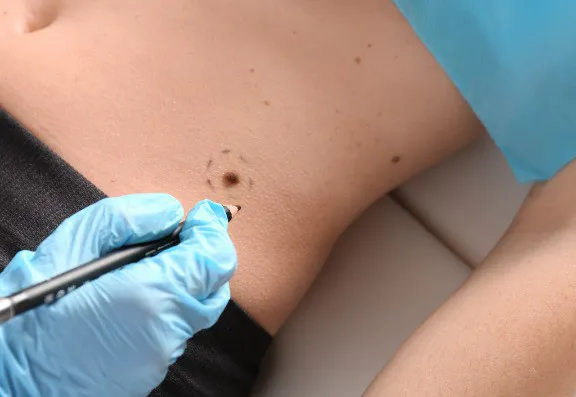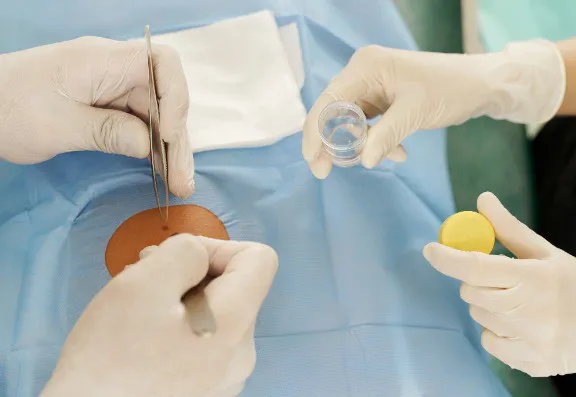6. Safety margin
Specific lesions require a safety margin when removed. When we remove moles, we typically leave a small free margin around the lesion, so there is nothing left back with the potential to regrow. When inadequately removed, moles may grow back, and they can look ugly and develop into pseudo-melanoma, which causes some headaches for clinicians and pathologists alike. With an ablative method (laser, cryo, cauterisation), the extent of the safety margin is unclear.
7. Histology analysis after mole removal
In every case, histology analysis should be performed when there is the slightest suspicion about a skin lesion being malignant or the lesion’s nature is unclear. It will reveal the final diagnosis, and it can determine whether any further action is needed or not.
8. The scar after mole removal
There is a very simple rule here: any procedure that reaches the dermis (the second, thick layer of the skin) causes a scar. Procedures more superficial to this don’t leave a scar. So, small lesions such as viral warts, fibromas, and seborrheic keratoses can be removed without causing a permanent scar. If completely removed, any lesion extending into the dermis (most of the moles) leaves a permanent scar. Moles can be removed superficially with a shave biopsy, but in this case, it is most likely that there are remaining deeper cells with the potential to reappear.
9. Risks and complications
During the consultation process, patients need to understand clearly the potential risks and complications of mole removal, such as infection, recurrence, unsatisfactory healing (keloid, hypertrophy, pigmentation), or unintended ablative removal of a malignant tumour without histology, including the possibility when no procedure is done.
10. Aftercare
It depends on the location and size of the scar, but generally, a fresh scar needs support and protection. The dressing should be kept on for a few days without getting wet. Patients should avoid physical activity at this stage. After the removal of stitches (if applicable), a firm massage with cream or oil is recommended multiple times a day (the more, the better), followed by the application of a silicone liquid or tape. Scars need UV protection for 18 months post-procedure.
Conclusion
Mole removal, while common, is not a decision to be taken lightly. It involves considerations regarding diagnosis, location, method, and aftercare, each with its own complexities. To ensure the best outcomes, it is crucial patients consult with a skilled dermatologist who can guide them through the process with expertise and care.


